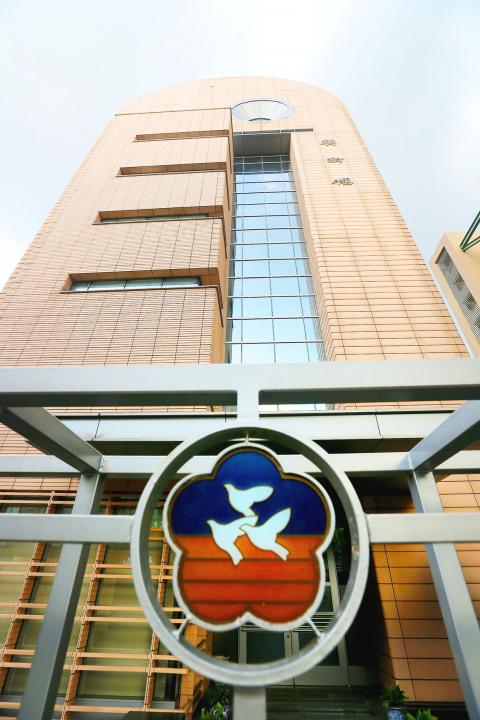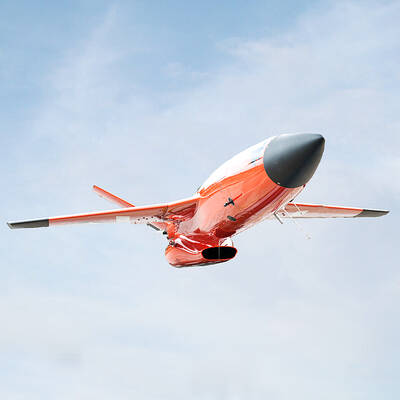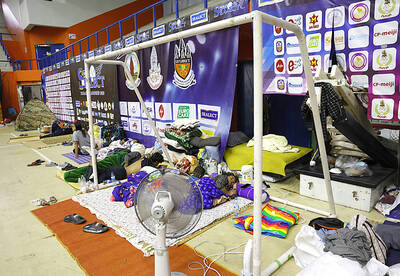The National Women’s League will cease to exist as a political organization under a new agreement, Minister of the Interior Yeh Jiunn-rong (葉俊榮) announced yesterday, adding that the league has agreed to donate nearly 80 percent of its NT$38.1 billion (US$1.25 billion) worth of assets under government supervision.
“After the transition is complete, there will no longer be a National Women’s League, because what is left will be merged into its Social Welfare Foundation,” Yeh said.
He presented an official document from the league agreeing to transfer NT$6.9 billion in assets to its foundation and NT$31.2 billion to the government, a sharp increase from the league’s proposal in February to donate NT$16 billion to the government.

Photo: CNA
The league also dropped its demand to donate NT$6 billion to Cheng Hsin Hospital, which was established by league founder Soong Mayling (宋美齡), the wife of then-president Chiang Kai-shek (蔣介石).
While the league constructed housing for families of military personnel who retreated to Taiwan following the Chinese Nationalist Party’s (KMT) defeat in the Chinese Civil War, it has been dogged by accusations of being a KMT satellite organization that illegally benefited from its close ties to the party.
“Both sides had their positions and calculations, and both sides compromised on the figures,” Yeh said, adding that the passage of time made it impossible to prove which portion of the league’s assets came from the Military Benefit Tax tariff levied on imported goods between 1955 and 1989.
The league will be allowed to earmark areas in which the government funds are to be spent, but it must also accept public oversight of its Social Welfare Foundation, Foundation for the Hearing Impaired and Hua Hsing Children’s Home, Yeh said.
While there is substantial board membership overlap, the organizations are legally separate from the league, which is registered as a “political organization,” Civil Affairs Department Director Lin Ching-chi (林清淇) said.
“These groups will no longer be sealed off from public oversight or continue to exist as clubs for KMT officials’ wives,” he said, adding that the government would appoint one-third of the organizations’ boards of directors, with an additional third of director appointments subject to government veto.
“There is no longer any need to remove the league’s head” based on the agreement, he said, adding that chairperson elections for the boards would be held following their reorganizations.
The Cabinet’s Ill-gotten Party Assets Settlement Committee participated in the ministry’s meetings with the league and has agreed to the settlement, Lin said, adding that while the deal must be formally approved by the league membership, the ministry hopes to fully implement the terms within three months.

The US government has signed defense cooperation agreements with Japan and the Philippines to boost the deterrence capabilities of countries in the first island chain, a report by the National Security Bureau (NSB) showed. The main countries on the first island chain include the two nations and Taiwan. The bureau is to present the report at a meeting of the legislature’s Foreign Affairs and National Defense Committee tomorrow. The US military has deployed Typhon missile systems to Japan’s Yamaguchi Prefecture and Zambales province in the Philippines during their joint military exercises. It has also installed NMESIS anti-ship systems in Japan’s Okinawa

‘WIN-WIN’: The Philippines, and central and eastern European countries are important potential drone cooperation partners, Minister of Foreign Affairs Lin Chia-lung said Minister of Foreign Affairs Lin Chia-lung (林佳龍) in an interview published yesterday confirmed that there are joint ventures between Taiwan and Poland in the drone industry. Lin made the remark in an exclusive interview with the Chinese-language Liberty Times (the Taipei Times’ sister paper). The government-backed Taiwan Excellence Drone International Business Opportunities Alliance and the Polish Chamber of Unmanned Systems on Wednesday last week signed a memorandum of understanding in Poland to develop a “non-China” supply chain for drones and work together on key technologies. Asked if Taiwan prioritized Poland among central and eastern European countries in drone collaboration, Lin

The Chien Feng IV (勁蜂, Mighty Hornet) loitering munition is on track to enter flight tests next month in connection with potential adoption by Taiwanese and US armed forces, a government source said yesterday. The kamikaze drone, which boasts a range of 1,000km, debuted at the Taipei Aerospace and Defense Technology Exhibition in September, the official said on condition of anonymity. The Chungshan Institute of Science and Technology and US-based Kratos Defense jointly developed the platform by leveraging the engine and airframe of the latter’s MQM-178 Firejet target drone, they said. The uncrewed aerial vehicle is designed to utilize an artificial intelligence computer

Renewed border fighting between Thailand and Cambodia showed no signs of abating yesterday, leaving hundreds of thousands of displaced people in both countries living in strained conditions as more flooded into temporary shelters. Reporters on the Thai side of the border heard sounds of outgoing, indirect fire yesterday. About 400,000 people have been evacuated from affected areas in Thailand and about 700 schools closed while fighting was ongoing in four border provinces, said Thai Rear Admiral Surasant Kongsiri, a spokesman for the military. Cambodia evacuated more than 127,000 villagers and closed hundreds of schools, the Thai Ministry of Defense said. Thailand’s military announced that